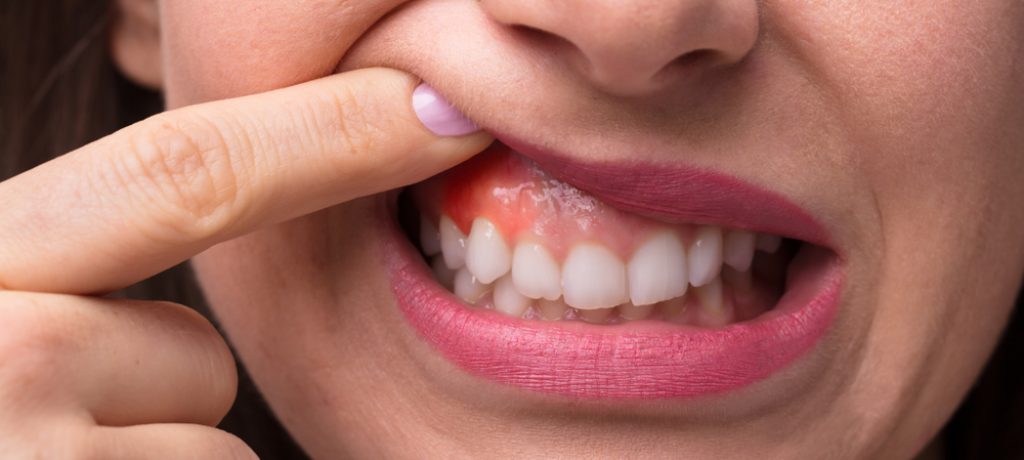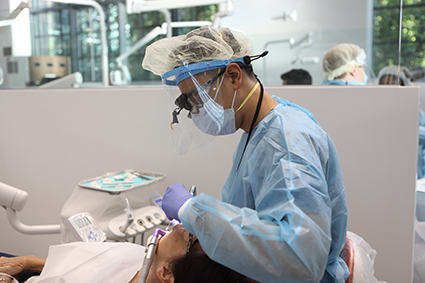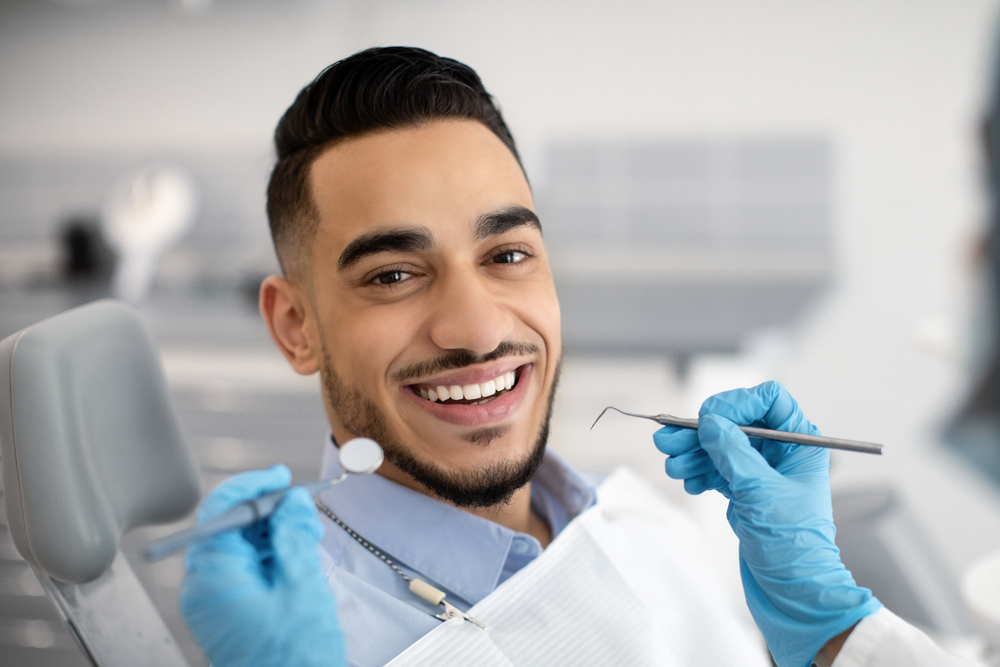Resource Library
Start Reading

Do your gums appear to be receding or pulling away from your teeth? If so, you are not alone. According to research, 70.1% of adults 65 years and older have gum disease, which can include receding gums around at least one tooth. Even younger adults can have the condition, with 47% of adults age 30 or older affected by gum disease that can lead to receding gums.
At Penn Dental Family Practice, our experienced periodontists routinely address how to fix receding gums using the most advanced dental technology and care methods to find the best treatment for each individual’s case.
 You may be wondering what causes your gums to recede. The answer varies from patient to patient, but typically gum recession is caused by one of the following conditions:
You may be wondering what causes your gums to recede. The answer varies from patient to patient, but typically gum recession is caused by one of the following conditions:
Gingivitis. Poor dental hygiene, such as not brushing and flossing correctly, or often enough, and not seeing your dentist for checkups, can cause plaque to build up on the teeth. Over time, plaque can harden into tartar, which may irritate the gums and cause bacteria buildup that leads to inflammation.
Periodontitis. Untreated gingivitis can progress into periodontitis or gum disease. Chronic inflammation due to periodontitis can cause receding gums and contribute to bone and tooth loss.
Brushing the wrong way. Brushing your teeth too vigorously or with a hard-bristled toothbrush can accelerate gum recession and increase irritation.
Tobacco. Smoking, chewing, and other forms of tobacco use can damage the gum line.
Trauma. Receding gums can result from teeth, mouth, and gum injuries. In addition, ill-fitting dentures that irritate the tissue can also affect gum health.
Genetics. Some individuals are born with weak or compromised gums, making them more prone to receding gums.
 Symptoms of receding gums are usually noticeable. The most common sign is being able to see a portion of the tooth’s root when you smile or open your mouth. Other common symptoms include:
Symptoms of receding gums are usually noticeable. The most common sign is being able to see a portion of the tooth’s root when you smile or open your mouth. Other common symptoms include:
At Penn Dental Family Practice, our doctors always seek the safest, most effective ways to treat receding gums.
In the early stages, treatment will likely focus on oral hygiene and reversing gingivitis. Your periodontist may use topical antibiotics or insert them under the gum surface to treat the infection.
This may include a recommendation for a soft-bristled toothbrush and prescription toothpaste to control plaque and tartar, as well as deep dental cleaning, known as scaling and root planing.
In extreme cases, treatments may focus on reducing further damage and replacing lost gum tissue with prosthetic options.
 Unfortunately, once the gums have receded, they cannot grow back. So, the best way to protect your gums is to prevent further damage. If you think you have receding gums or are concerned about your gum health, your Penn Dental Family Practice dentist can help.
Unfortunately, once the gums have receded, they cannot grow back. So, the best way to protect your gums is to prevent further damage. If you think you have receding gums or are concerned about your gum health, your Penn Dental Family Practice dentist can help.
Make an appointment today for an exam and evaluation by calling our office at 215-898-7337. You can also download our complimentary Gum Disease Self-Assessment flyer to answer some of your questions before your visit.
In addition to making oral hygiene part of your daily routine and getting regular dental checkups, your Penn dentist may suggest adding varnishes and other desensitizing agents to reduce pain, sensitivity, and discomfort to help you learn how to fix receding gums and maintain a healthy mouth. Then, you can relax knowing you’ve taken an important step to help ensure your teeth and gums remain as healthy as possible—for as long as possible.